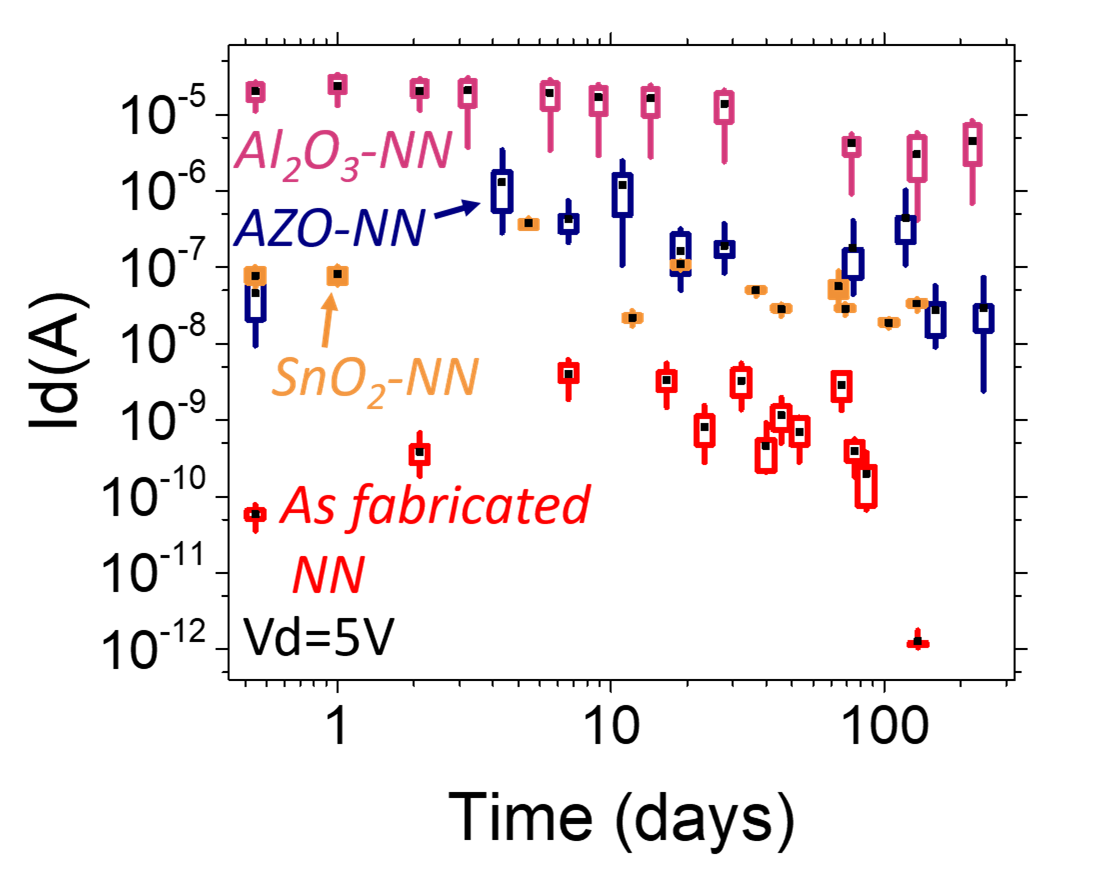
-
- to
Here you will find Fanny Morisot's paper:
"Two-dimensional (2D) randomly oriented nanowire networks, also called nanonets, have remarkable advantages including low-cost integration, good reproducibility and high sensitivity, which make them a promising material for electrical devices. With this work, we focus on the study of ZnO nanonet as channel materials in field effect transistors (FETs). In our process, ZnO nanowires were assembled in NNs by the liquid filtration method and were integrated in transistors, with the bottom-gate configuration, using simple technological steps. Non-encapsulated devices exhibited state of the art performances but their stability toward air exposure was poor. Using a proper encapsulation of the nanonets, with cheap abundant and non-toxic oxides, we demonstrate our ability not only to stabilize their electrical properties, but also to enhance performance to values never reach before for ZnO nanowire-based transistors. Our best FETs exhibit a low off-current while maintaining very good on current, which results in a Ion/Ioff ratio exceeding 106 for a drain voltage of 5V. The behavior of these ZnO NN-based FETs was studied for three different encapsulation materials, alumina (Al2O3), tin oxide (SnO2) and Al-doped ZnO (AZO). These results prove that ZnO NNs are highly promising materials for an easy and low-cost integration into FETs."


